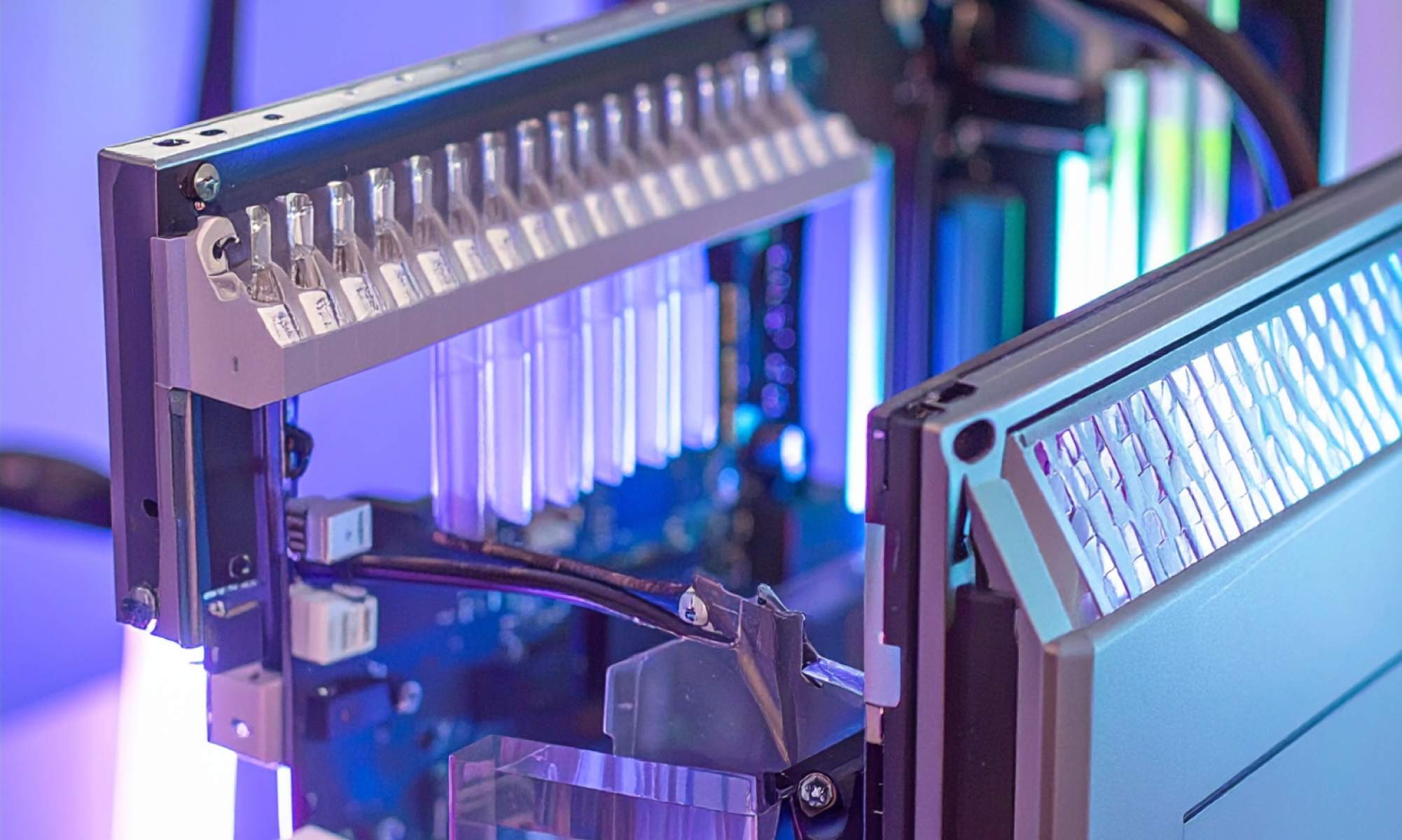AI
our blog
10 Ways ux artificial intelligence Transforms User Experience Design

Overview
This article examines how UX artificial intelligence is revolutionizing user experience design by enhancing personalization, streamlining workflows, and improving accessibility. By leveraging AI-driven insights and automation, organizations can create more engaging and tailored user experiences. Furthermore, this transformation not only boosts productivity but also fosters significant business growth. Consequently, it is imperative to integrate AI into modern design practices to remain competitive in today's landscape.
Introduction
The digital landscape is experiencing a profound transformation as artificial intelligence (AI) increasingly integrates into user experience (UX) design, fundamentally altering how businesses engage with their audiences. This article delves into ten transformative ways AI is reshaping UX, ranging from enhanced personalization to streamlined collaboration and automated design tasks. As organizations endeavor to create more intuitive and satisfying user interactions, a critical question emerges: how can businesses effectively harness the potential of AI while navigating the ethical and practical challenges it presents?
Studio Graphene: Leveraging AI for Enhanced User Experience Design
Studio Graphene leverages UX artificial intelligence to analyze client data and behavior, paving the way for the creation of tailored experiences. The integration of UX artificial intelligence into the design process allows for the anticipation of individual needs and preferences, resulting in interfaces that are not only intuitive but also engaging. Furthermore, this strategy significantly enhances user satisfaction, while simultaneously driving business growth by ensuring that products resonate deeply with their target audience. In an era where personalization is paramount, adopting such innovative approaches is essential for staying competitive.

Figma: Streamlining Collaboration and Prototyping with AI
Figma harnesses the power of UX artificial intelligence to revolutionize collaboration among creative teams by automating repetitive tasks and facilitating real-time feedback. This integration of AI-driven features, such as the 'First Draft' tool, enables designers to swiftly prototype and refine their creations, ensuring that every team member can contribute effectively. Consequently, the creation process becomes significantly more efficient, leading to quicker project completion and enhanced overall quality.
Notably, tools utilizing UX artificial intelligence, particularly AI-driven templates, have been demonstrated to boost productivity by up to 40%, allowing teams to concentrate on creativity and strategic thinking rather than mundane tasks. Furthermore, case studies reveal that creative teams utilizing Figma's AI capabilities experience a marked reduction in time-to-market, with some reporting a decrease in iteration time by as much as 33%, as highlighted in the AI-powered Figma updates case study.
This efficient method not only enhances collaboration but also empowers teams to produce high-quality products that resonate with individuals. However, it is essential to acknowledge the ethical concerns associated with AI in creation, including issues of copyright infringement and potential job displacement.

Adobe Analytics: Utilizing AI for Advanced User Behavior Insights
Adobe Analytics harnesses the power of AI to sift through extensive data, delivering actionable insights that illuminate behavior patterns. This analytical capability empowers creators to grasp how individuals interact with products, fostering informed choices that significantly enhance the end user’s experience using ux artificial intelligence. By embracing a data-driven methodology, businesses can implement continuous improvements and optimize their digital offerings. For instance, ux artificial intelligence can be utilized in predictive analytics to identify customer intent, facilitating timely adjustments in design strategies that resonate with user needs. Notably, leveraging customer insights through ux artificial intelligence can elevate marketing ROI by 30%, underscoring the tangible benefits of incorporating AI into decision-making processes.
A prime example of this is the collaboration between Studio Graphene and Canopy, where ux artificial intelligence insights were pivotal in refining their mobile app and web platform aimed at transforming the rental experience. Through a series of brainstorming sessions, both teams focused on enhancing functionality and participant engagement, implementing visual aids and tutorials to simplify complex topics such as rental budgets. This iterative process not only spurred innovation but also ensured that the digital products developed aligned with client expectations, ultimately driving business growth. Furthermore, with the staggering statistic that 5 exabytes of information are created every two days, the significance of ux artificial intelligence in effectively managing and analyzing user data cannot be overstated. Studio Graphene's B Corp Certification further underscores their commitment to social and environmental performance, reinforcing the credibility of their approach to utilizing AI in product development.

Sketch: Automating Design Tasks to Enhance Workflow Efficiency
Sketch employs ux artificial intelligence to automate repetitive creative tasks, enabling designers to focus more on creativity and innovation. Features such as smart layout and symbol overrides significantly enhance the creation process, reducing time spent on routine activities. This automation not only boosts productivity but also elevates the quality of the creations produced.
Studies show that AI tools can improve workflow efficiency by up to 66%, based on previous versions of generative AI, enabling designers to accomplish more in less time. By alleviating cognitive load, ux artificial intelligence empowers designers to engage in complex problem-solving and creative exploration, ultimately leading to superior design outcomes.
However, it is crucial to recognize potential challenges linked to AI implementation, including data bias and security vulnerabilities. Designers are encouraged to integrate ux artificial intelligence tools into their workflows to fully harness these advantages.

Optimizely: Personalizing User Experiences with AI-Driven Insights
Optimizely utilizes ux artificial intelligence to create highly tailored interactions by meticulously analyzing data and behavior patterns. This capability empowers businesses to customize content and features for individual clients, significantly enhancing engagement and satisfaction. By leveraging insights from ux artificial intelligence, companies can craft more relevant and impactful experiences for their clients, ultimately fostering improved customer retention and loyalty.
Notably, brands that prioritize personalization experience a 60% higher profitability rate, underscoring the critical importance of tailored interactions in today’s competitive landscape. Furthermore, 62% of business leaders identify personalization as the key to increased customer retention, emphasizing its essential role in business strategy.
As ux artificial intelligence technology progresses, its ability to predict individual preferences and dynamically adjust content will further transform business engagement with audiences. Companies such as Netflix and Starbucks exemplify this trend, utilizing AI to deliver personalized suggestions that enhance satisfaction and boost engagement.

UsabilityHub: Enhancing User Testing with AI-Powered Feedback
UsabilityHub revolutionizes testing through AI, delivering immediate feedback on selection choices. This platform empowers designers to swiftly gather insights from real users, fostering data-driven decision-making. The analysis driven by ux artificial intelligence identifies usability issues early in the design process, significantly enhancing product user-friendliness.
Companies utilizing ux artificial intelligence in usability testing have reported a remarkable 25% increase in conversion rates, underscoring the tangible benefits of integrating AI into user research. Moreover, A/B testing can achieve a 20-30% success rate, further validating the efficacy of AI-driven testing methods.
By streamlining the feedback loop, UsabilityHub accelerates the testing process and ensures that products resonate more effectively with their target audience. Additionally, early usability testing can reduce development costs by identifying issues before they escalate, establishing ux artificial intelligence as an indispensable asset in the testing landscape.

Voiceflow: Improving Accessibility in UX Design with AI
Voice technology, propelled by ux artificial intelligence, is revolutionizing accessibility in user experience (UX), especially through voice user interfaces (VUIs). By enabling voice interactions, designers are crafting products that are more inclusive, allowing individuals with disabilities to engage with technology in a natural and intuitive way. This approach not only broadens the audience but also adheres to ethical design principles that prioritize the needs of all users.
For instance, VUIs significantly enhance interaction by automating straightforward tasks, such as:
- Setting reminders
- Checking the weather
These are beneficial features for individuals with mobility challenges. The incorporation of AI allows these interfaces to learn individual preferences and adapt to various speech patterns, ensuring that interactions feel conversational and personalized.
Furthermore, studies reveal that over 40% of adults in the U.S. engage in daily voice searches, underscoring the increasing acceptance and reliance on voice technology. Notably, 70% of voice searches pertain to music via smart speakers, illustrating the diverse applications of this technology. This trend emphasizes the necessity of designing VUIs that utilize ux artificial intelligence to be not only functional but also user-friendly, as they can alleviate cognitive load and streamline interactions, particularly in multitasking scenarios.
By prioritizing accessibility, designers can develop VUIs that enhance overall interaction through ux artificial intelligence, making technology more approachable for all users. This commitment to inclusivity is vital in today’s digital landscape, where the demand for accessible solutions continues to grow. Additionally, it is essential to address broader accessibility challenges in web development, such as:
- Insufficient keyboard navigation
- Lack of image alt text
Overlooking these elements can result in substantial financial repercussions, with consumer companies facing annual losses of $6.9 billion due to inaccessible websites. Moreover, integrating contextual awareness in VUIs enhances personalization and reduces the need for users to repeat information, while effective error management ensures that systems provide constructive feedback during misunderstandings, ultimately improving user satisfaction.

Axure RP: Creating Adaptive Interfaces with AI Technology
Axure RP harnesses ux artificial intelligence to create adaptive interfaces that intuitively respond to individual behaviors and preferences. This revolutionary capability empowers designers to create dynamic prototypes that evolve with user interactions, resulting in highly customized outcomes. By integrating ux artificial intelligence into the development process, Axure RP markedly enhances the usability and effectiveness of digital products.
The deployment of adaptive AI has been shown to boost engagement by 57%, underscoring its potential to transform design interactions. Furthermore, 72% of organizations adopting adaptive AI report at least a 35% improvement in operational efficiency (Gartner, 2023), illustrating the broader advantages of this technology.
Industry leaders, including Sundar Pichai and Satya Nadella, advocate for the integration of ux artificial intelligence in experience design, emphasizing its transformative power in tackling complex challenges. Additionally, adaptive AI is associated with a 63% faster resolution time in customer service (Customer Service Institute, 2023), demonstrating its significant impact across various applications.
However, it is crucial to address the challenges tied to implementing adaptive AI, such as complexity and data quality demands, alongside the necessity of explainability and trust in AI systems to ensure user acceptance.

InVision: Navigating the Challenges of AI Integration in UX Design
InVision is adeptly navigating the complexities of integrating AI into its creation platform, emphasizing the critical balance between leveraging AI tools and preserving the creative essence of artistry. By adhering to user-focused development principles, InVision seeks to establish AI functionalities that enhance designers' workflows without encumbering their creative processes. This approach is vital for ensuring that ux artificial intelligence serves as a supportive ally in the development of user experience, fostering innovation while safeguarding the human element essential for impactful user interactions.
Richard James, Director of CX at AmplifAI, underscores that technology should augment human capabilities rather than replace them. Notably, with only 4% of creative tasks being entirely automatable compared to 60% of repetitive tasks, organizations must recognize the limitations of AI in creative endeavors. Addressing challenges such as skill gaps and employee resistance is imperative for successful integration of ux artificial intelligence in user experience.
CTOs can achieve this balance by promoting a culture of continuous learning and providing training on AI tools, ensuring their teams can effectively harness AI's potential while preserving creativity.

Future Trends: The Evolving Role of AI in UX Design
The role of UX artificial intelligence in UX design is rapidly evolving, marked by significant trends in personalization, accessibility, and testing processes. As AI technology progresses, designers must adapt their strategies to effectively leverage these innovations. Notably, 70% of mobile device owners now prefer applications with customized interfaces, reflecting a growing demand for individualized interactions. Furthermore, 90% of marketers assert that personalization significantly enhances business profits, highlighting its critical role in driving success.
Despite 55% of UX professionals prioritizing accessibility, 68% of websites still do not comply with WCAG standards, indicating a vital area for improvement. As organizations increasingly integrate UX artificial intelligence into consumer research—56% of businesses are already analyzing behavioral patterns—designers are better equipped to create inclusive and engaging interactions.
Additionally, with 88% of individuals less likely to revisit a site after a negative experience, the emphasis on usability becomes paramount. Staying informed about these trends is essential for crafting user experiences that resonate with future users, ensuring that UX artificial intelligence not only enhances personalization but also improves accessibility in design.
CTOs should prioritize investments in AI tools that enhance both personalization and accessibility within their UX artificial intelligence design processes.

Conclusion
The integration of artificial intelligence into user experience design is not merely a trend; it signifies a fundamental shift in how businesses engage with their users. By leveraging AI technologies, companies can create personalized, efficient, and accessible experiences tailored to the unique needs of their audiences. The transformative power of AI spans various dimensions of UX design, enhancing collaboration, automating tasks, providing insightful analytics, and improving accessibility.
Key insights from the discussion reveal how tools like Figma, Adobe Analytics, and UsabilityHub utilize AI to streamline processes and elevate user satisfaction. The capacity to automate repetitive tasks, analyze user behavior, and personalize interactions not only boosts productivity but also cultivates deeper connections between brands and their customers. Moreover, the importance of ethical considerations and the necessity for a balanced approach to AI integration cannot be overstated as businesses navigate the complexities of this evolving landscape.
As the role of AI in UX design continues to expand, it is imperative for organizations to stay informed about emerging trends and invest in technologies that prioritize personalization and accessibility. Embracing these innovations will not only enhance user experiences but also drive business growth in an increasingly competitive market. The future of UX design resides in the thoughtful application of AI, ensuring that technology enriches human interactions rather than replaces them.









